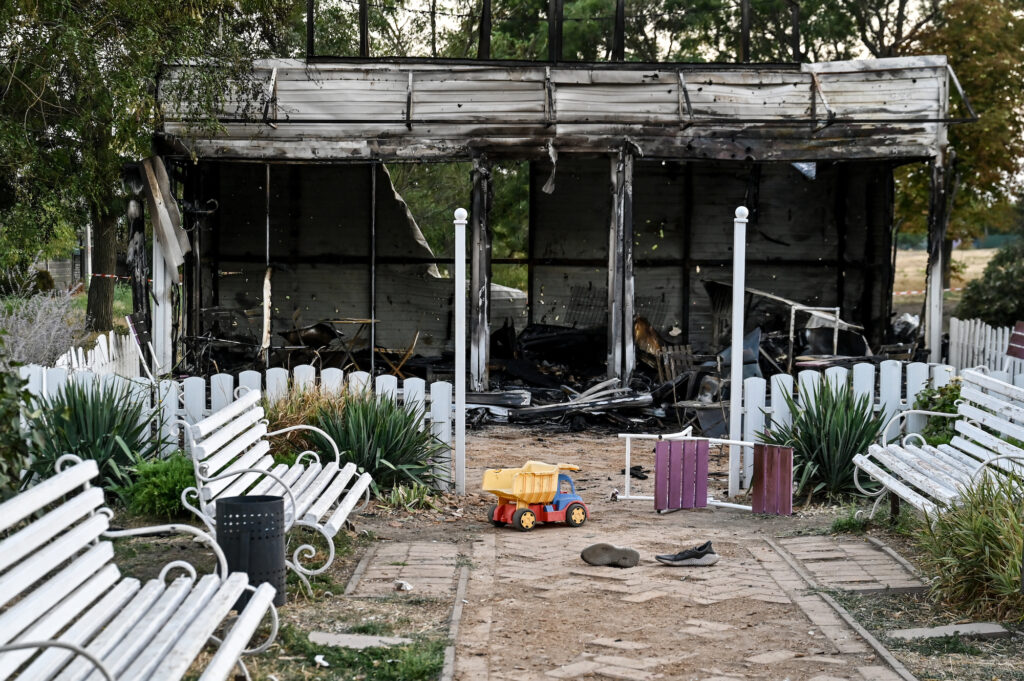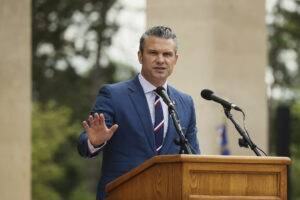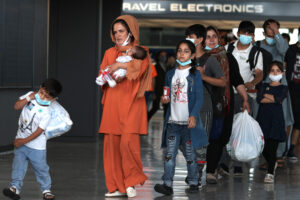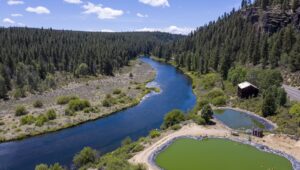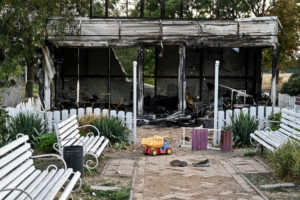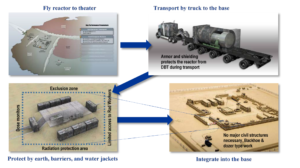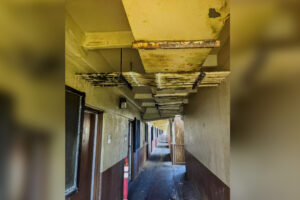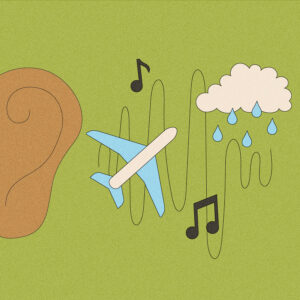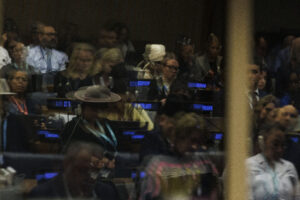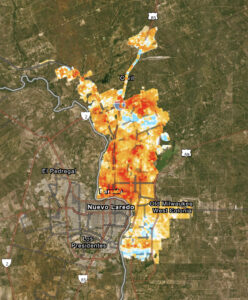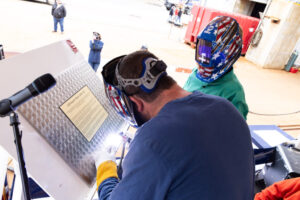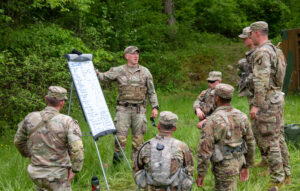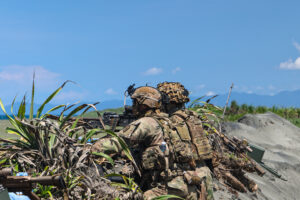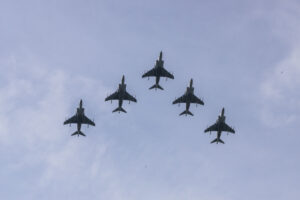Twenty-two-year-old software developer Artem Motorniuk has spent his entire life in the Zaporizhzhia region of Ukraine, living in the north and visiting his grandparents in the south. It’s been almost four years since he’s seen them in person.
“My grandparents right now are under occupation,” he says. “We can reach them once a month on the phone.”
Motorniuk and his family’s story is a common one in eastern Ukraine. Since Russia launched its full-scale invasion of the country in February 2022, the war has devastated both occupied and liberated regions. Over a million people on both sides have been killed or injured in the war, according to recent estimates. Whole towns have been flattened and infrastructure destroyed, leading to almost 6 million people displaced internally and 5.7 million refugees taking shelter in neighboring European countries. For those who remain, the psychological toll is mounting.
“They shoot rockets really close to Zaporizhzhia,” Motorniuk said. “[Last August] they got the region with artillery shells, and they hit in the place where children were just hanging around and killed four children.”

Ukrinform/NurPhoto via Getty Images
The conflict has become highly politicized and volatile in recent months. The United States in April signed a deal with Ukraine to establish a joint investment fund for the country’s eventual reconstruction, in exchange for access to its wealth of critical minerals. At the same time, President Donald Trump has increasingly aligned himself with Russian President Vladimir Putin, at one time even questioning which country incited the conflagration, and U.S. attempts to advance a ceasefire have stalled.
Now, just past the three-year mark, the conflict’s long-term costs are becoming more apparent, including the damage to the country’s natural resources. Rocket fire, artillery shelling, and explosive devices, such as land mines, from both militaries have ravaged Ukraine’s landscapes and ecosystems. Over a third of all carbon emissions in Ukraine stem from warfare — the largest share of any sector in the country. Fighting has triggered destructive wildfires in heavily forested and agricultural grassland regions of eastern Ukraine. From February 2022 through September 2024, almost 5 million acres burned, nearly three-quarters of which are in or adjacent to the conflict zone.
The conflict zone: Up to 90% of Ukraine’s wildfires have occurred in less than 20% of the country
Cumulative acres burned during the war: in Ukraine, in the conflict zone, and in conservation areas
But not all rockets explode when they’re shot, and mines only go off when they’re tripped, meaning these impacts will linger long after conflict ceases.
This is why a collective of forestry scientists in Ukraine and abroad are working together to study war-driven wildfires and other forest destruction, as well as map unexploded ordnance that could spur degradation down the road. The efforts aim to improve deployment of firefighting and other resources to save the forests. It is welcome work, but far from easy during a war, when their efforts come with life-threatening consequences.
Ukraine, a large European nation with significant agricultural and forested regions, is now experiencing a severe ecological crisis in parallel with its ongoing war with Russia.
The country contains 35 percent of Europe’s biodiversity, much of it protected within the Emerald Network, a pan-European collection of ecologically significant sites designed to conserve habitats and species. Its vast forests also act as natural carbon sinks, sequestering greenhouse gas emissions to slow the pace of climate change.
Wildfires have long played a key ecological role in Ukraine, with slow, steady burns enriching soils and landscapes. But decades of mismanagement — specifically the Soviet Union’s conversion of native forest to timber-prized pine — and climate change-fueled drought have left much of the country’s vast forestland more tinderbox than sanctuary.
When Russia launched a full-scale invasion of Ukraine in February 2022, the country was primed to burn. By March, established conflict zones were the center of widespread destruction — humanitarian, structural, and environmental.
As the conflict continued and frontlines moved throughout 2022 and 2023, military activity increasingly ignited and exacerbated wildfires across Ukraine, leading to extensive land damage.
For nearly three years, fighting intensified while wildfires accumulated along the frontlines…
By the end of 2024, these fires had spread far beyond the conflict zones, consuming protected areas like Serebryansky Forest as fuel.
War-triggered wildfires are ravaging Ukraine’s forests
Scroll to continue
Institute for the Study of War / Critical Threats Project / Clayton Aldern / Chad Small / Grist
The Serebryansky Forest serves as a strategic passing point for Russian forces and a key defense point for Ukrainian forces. To completely occupy the Luhansk and Donetsk regions, Russia has to pass through the forest. Holding the line here has allowed the Ukrainians to stop the Russian advance, but at a steep cost.
“The shelling, it’s an explosive wave, the fire makes everything unrecognizable,” a medic with the National Guard 13th Khartiya Brigade told the Institute for War & Peace Reporting in March. “When they get up, the forest is different, it has all changed.”
When you introduce war, you create fires that can’t be effectively extinguished.
“You cannot fly aircraft to suppress fire with water because that aircraft will be shot down,” Maksym Matsala, a postdoctoral researcher at the Swedish University of Agricultural Sciences, explained.
Forests and agricultural land are woven together across Ukraine, meaning wildfires also endanger the country’s food supply. Battle-sparked blazes destroy harvests and eliminate the trees that shelter cropland from drying winds and erosion that can lead to drought — leaving those on the military front lines and Ukrainian citizens at risk of food insecurity.

These forests have also served as a physical refuge for people in Ukraine fleeing persecution or occupation. For generations, local populations sheltered among the trees to avoid conflict with neighboring invaders. This theme continues today, shielding Ukrainians fleeing cities demolished by Russian troops. Fires are threatening this shelter.
Preventative measures like removing unexploded ordnance that could ignite or intensify fires are now unimaginably dangerous and significantly slower when set to the backdrop of explosions or gunfire, said Sergiy Zibtsev, a forestry scientist at the National University of Life and Environmental Sciences of Ukraine and head of the Regional Eastern Europe Fire Monitoring Center. In a country as heavily covered in mines as Ukraine, this turns small embers into out-of-control blazes.
Matsala added that forests under these war-ravaged conditions may not ever truly recover. Consistent shelling, explosions, and fires leave a graveyard of charred trees that barely resemble a woodland at all. Consistent fighting since February 2022 has left the Serebryansky Forest an alien landscape.
“The local forest now looks like some charcoal piles without any leaves, and it’s just like the moon landscape with some black sticks,” Matsala said.

In liberated regions of Ukraine, the wildfire management strategy involves removing land mines one by one, a process known as demining. It’s a multistep system where trained professionals first survey a landscape, sometimes using drones, to identify regions where mines are likely to be found. They then sweep the landscape with metal detectors until the characteristic pattern of beeps confirms the presence of one. Next, they must disable and extract it. Even without the risk of accidentally triggering unexploded ordnance, demining in an active conflict zone is incredibly dangerous. Deminers elsewhere have been killed by enemy combatants before. And a misstep can cause an explosion that sparks a new fire, which can spread quickly in Ukraine’s war-denuded landscape. Demining is a “square meter by square meter” process that must be done meticulously, said Zibtsev.
These challenges are what spurred Brian Milakovsky and Brian Roth, two professional foresters with Eastern European connections, to found Forest Release in 2023.

The U.S.-based nonprofit helps coordinate and disseminate monitoring research in Ukraine’s forests. Using satellite products that take into account vegetation greenness, Milakovsky, Roth, and their collaborators can identify particular forests in Ukraine that might be under the most stress from fires. Forest Release can then send this information to local firefighters or forest managers in Ukraine so they can tend to those forests first. It also collects firefighting safety equipment from the U.S. to donate to firefighters in Ukraine. Both of these activities allow Forest Release and its Ukrainian counterpart, the Ukrainian Forest Safety Center, to train foresters to fight fires and get certified as deminers.
To make drone-based mine detection more effective and safe, two other American researchers launched an AI-powered mine-detection service in 2020 that’s being used in Ukraine: Jasper Baur, a remote sensing researcher, and Gabriel Steinberg, a computer scientist, founded SafePro AI to tap artificial intelligence to more autonomously and efficiently detect land mines in current and former warzones.
“I started researching high-tech land mines in 2016 in university,” Baur said. “I was trying to research how we can detect these things that are a known hazard, especially for civilians and children.”
Surface land mines, as Baur explained, can seem particularly innocuous, which makes them even more dangerous. “They look like toys,” he said. He and Steinberg worked to turn their research project into a tangible application that would help deminers globally.
SafePro AI is trained on images of both inactive and active unexploded ordnance — everything from land mines to grenades. The model works by differentiating an ordnance from its surroundings, giving deminers an exact location of where a land mine is. When not being trained on images from Ukraine, it learns from images sourced elsewhere that Baur tries to ensure are as close to reality as possible.
Ukrainian soldiers and a tank parole during a period of heavy fighting in the Serebryansky Forest in eastern Ukraine, in June 2024. Pablo Miranzo/Anadolu via Getty Images (left) and Kostiantyn Liberov/Libkos/Getty Images
“A lot of our initial training data was in Oklahoma, and I’ve been collecting a lot in farmlands in New York,” he said. “I walk out with bins of inert land mines, and I scatter them in farm fields and then I try to make [the conditions] as similar to Ukraine as possible.”
Because a lot of land mines are in fields adjacent to Ukrainian forests, focusing removal efforts at the perimeter can stop fires before they spread. SafePro AI has team members in the U.S., United Kingdom, and also in Ukraine. In fact, Motorniuk, from the Zaporizhzhia region of Ukraine who also works for SafePro AI as a developer, said that his work has shown him that he can make a difference without picking up a gun. SafePro AI has received funding from the United Nations Development Programme to deploy the technology in Ukraine through humanitarian land mine action organizations. So far, the company has surveyed over 15,000 acres of land, detecting over 26,000 unexploded ordnance.

Much of the protection of Ukraine’s forests in and around the war is predicated on information. Can land mines be located? Can wildfires be slowed or stopped? In a geospatially data-poor country like Ukraine, Matsala highlights that this kind of work, and the creation of robust datasets, is necessary to ensure the survival of Ukraine’s natural ecosystems. It also offers a chance to rethink the country’s forestry in the long-term.
“This is a huge opportunity to change some of our … practices to make the forests more resilient to climate change, to these large landscape fires, and just [healthier],” Roth, of Forest Release, said.
Roth agrees with Matsala that Ukraine’s stands of non-native, highly flammable pine trees pose a prolonged threat to the country’s forests — particularly as climate change increases drought and heat wave risk throughout Europe. In Roth’s opinion, losing some of these forests to wildfires during the war will actually allow Ukrainian foresters to plant less flammable, native tree species in their place.

The scientific and humanitarian collaboration unfolding to protect Ukraine’s forests amid war may also provide a record that would allow the country to claim legal damages for ecosystem destruction in the future.
Matsala recalled what happened in the aftermath of the Gulf War in the early 1990s. Amid fighting, invading Iraqi forces destroyed Kuwait’s oil facilities, leading to widespread pollution throughout the region. Although Iraq was forced to pay out billions of dollars to Persian Gulf countries including Kuwait, Iran, and Saudi Arabia for both damages and remediation, the payments may not have covered the totality of the environmental impacts. Following the war, neighboring Iran requested millions of dollars in damages for a myriad of environmental impacts, including for acid rain caused by oil fires. The United Nations Compensation Commission ultimately found that Iran had “not provided the minimum technical information and documents necessary” to justify the claims for damages from the acid rain. Matsala worries that without extensive data and reporting on the war with Russia, future Ukrainian claims for environmental reparations might go nowhere.
Whether that tribunal comes to fruition, or the forests are properly rehabilitated, remains to be seen. But the work continues. And with hostilities still happening, and no clear end, it will continue to be dangerous.
This story was originally published by Grist with the headline How 3 years of war have ravaged Ukraine’s forests, and the people who depend on them on Jun 5, 2025.

